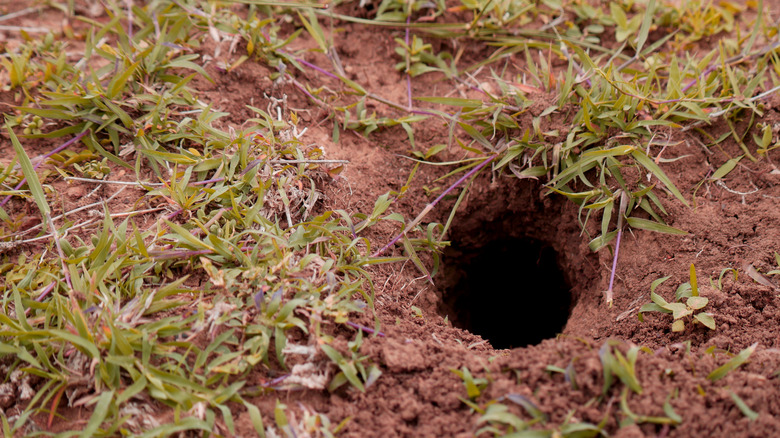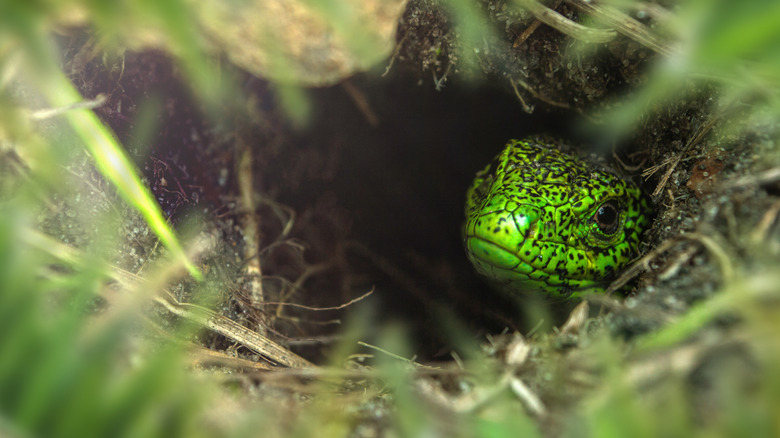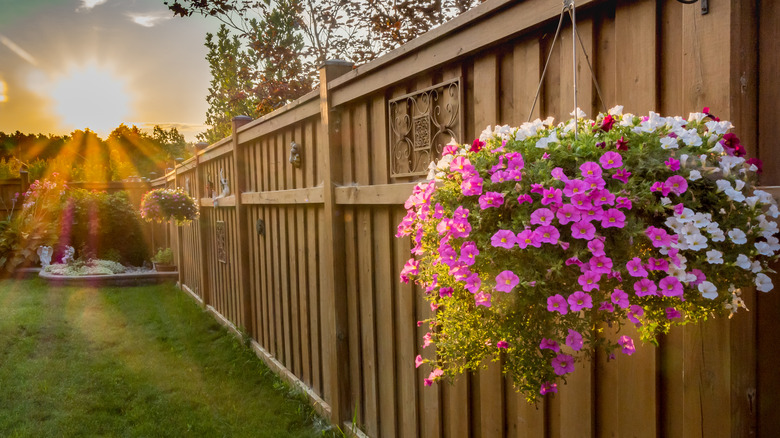How To Spot The Difference Between A Snake Hole And A Squirrel Hole
So, you've got some mysterious holes popping up in your yard, and you're wondering who's the culprit. Is it a snake slithering around, or perhaps a busy squirrel digging up the lawn? Knowing the difference between snake holes and squirrel holes could save you a lot of stress. The key things to look for are size, appearance, and depth. But you're probably wondering, "Why are these animals digging up my yard in the first place?" Let's break it down. Squirrels are the diggers-in-chief; they're on a constant quest for food or a cozy space for their next hideout. These little rascals are food hoarders, and they'll dig holes to store their latest finds. And their territory isn't limited to your lawn or garden. You might stumble upon squirrel-dug holes in other landscaped spots on your property, like flower beds or even your vegetable garden.
Snakes have a different agenda. Whether it's to avoid becoming another creature's lunch, snakes crave those hidden, underground spots. However, not all snakes dig holes; some usually take advantage of pre-existing holes, so they don't always have to do the hard work of digging. Both types of critters present unique challenges. Understanding the habits and preferences of these critters can not only help you identify the culprit of the hole but also guide you in taking effective steps to prevention.
Snake holes vs. squirrel holes: size, appearance, and depth
Distinguishing between squirrel and snake holes can be quite the detective work. If you're dealing with squirrels, you'll find their holes to be like their signature—uniform and relatively shallow, with a diameter of about 2 inches. They're almost courteous about it, not kicking up much soil around the hole, as if they're trying to keep the lawn neat. It's practically their version of wiping their feet before entering a home. But when it comes to snake holes, the story shifts. Their holes are generally smaller, clocking in at around 1 inch in diameter. Unlike the polite squirrels, you'll notice the soil around snake holes is loosely scattered. This isn't a sign of a messy snake but rather an indication of how the snake moves in and out. Claw marks or signs of digging are usually absent from snake holes, another clue that it's likely a squirrel hole.
And let's not overlook the ground squirrels. These critters are like the civil engineers of the rodent realm. They dig complex tunnel systems that can stretch up to an impressive 17 feet, with multiple entrances, each measuring about 2 inches wide. They're not just digging for fun; they're building an intricate home complete with multiple exits. Depth is another significant factor. Squirrels don't need a lot of room; a few inches below the ground usually suffice for storing food or providing a quick refuge. On the other hand, snakes might go deeper, seeking additional subterranean shelter.
Keeping unwanted guests at bay
Now, let's talk about how to keep these critters out of your yard. There's a variety of ways to keep squirrels out of your yard. Fences or hefty stones can serve as physical barriers, making it harder for them to access your garden or lawn. If constructing barriers isn't your style, consider herbal repellents as an eco-friendly option. There are even high-tech solutions like ultrasonic devices that emit sounds inaudible to humans but seriously annoying to squirrels. On the flip side, if snakes are your primary concern, you'll need a different game plan. First, get rid of what's luring them. If there's an easily accessible food or water source in your yard, that's practically an invitation.
Clean up any pet food left outside and fix those leaky hoses. You can also add a botanical twist by planting snake-repellent plants. These include marigolds and lemongrass, which might make your garden smell lovely to you but repulsive to snakes. For the long-term, regular lawn maintenance can help reduce the number of hiding spots for snakes. But what if you've already spotted a snake hole? Don't panic. Filling up these burrows is an effective way to send the message that they're not welcome. Use a mixture of soil and gravel, making it difficult for them to reopen the hole. Remember, it's not just about getting rid of these critters; it's about making your yard less attractive to them in the first place.


